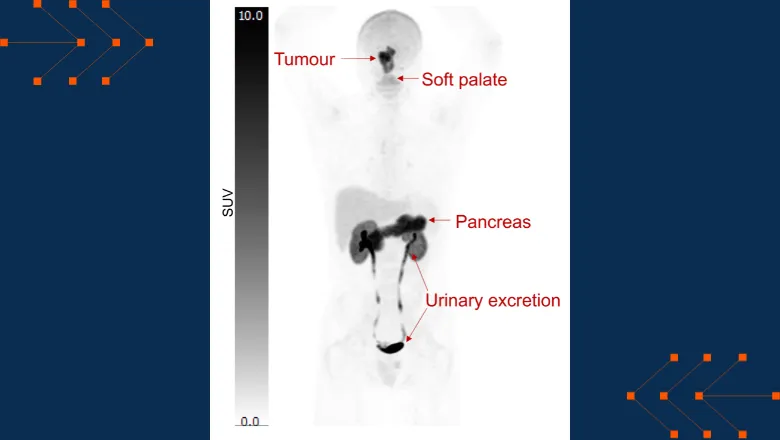In this review article, we argue that instead of being used as a general diagnostic agent, the promise of this novel radiotracer lies in the ability to assess early response to therapy. With a prospective clinical trial recently funded by the Rosetrees Trust and Guy’s Cancer Charity, we intend on doing just that here at King’s!
Dr Tim Witney, Reader in Molecular Imaging at the School of Biomedical Engineering & Imaging Sciences
05 December 2023
New review explores use of novel radiotracer in cancer imaging
Researchers from the School of Biomedical Engineering & Imaging Sciences have published a new review examining the suitability of a novel radiotracer in imaging cancer cells in the human body, and have suggested possible future uses in the clinic.

A radioactive tracer combines small amounts of radioactive material with a carrier molecule. This is then clinically injected into the body where it gives off particles that can be detected and imaged to help find problems in organs or other structures.
In the review article, authored by BRC Clinical Research Fellow Dr Amy Sharkey, Professor Gary Cook and Dr Tim Witney, the researchers summarise the use of an exciting PET radiotracer, known as 18F-FSPG, in human cancer patients.
The utility of radiotracer 18F-FSPG as a diagnostic tool for cancer has previously been studied in clinical trials. The article compared the novel 18F-FSPG radiotracer with the widely used 18F-FDG radiotracer in different cancer types. In some of these cases, the novel radiotracer outperformed 18F-FDG in detecting lesions. While 18F-FSPG highlighted many tumours, the variability in signal, however, may limit the scope of this radiotracer for cancer detection.
The review adopted a new approach by studying the imaging of system xc- in the body. System xc- is a molecular transportation mechanism in the human body, which is upregulated in tumour cells. 18F-FSPG attaches to, and is transported by, system xc- present in tumour cells, allowing for the accurate imaging of cancer using PET/CT technology. As the activity of system xc- changes in response to anti-cancer therapy, the researchers suggest that the real strength of 18F-FSPG might lie in assessing early treatment response and predicting resistance to therapy.
The study also discusses the potential use of 18F-FSPG in identifying drug-resistant tumours prior to treatment, offering a possible advancement in cancer care.


